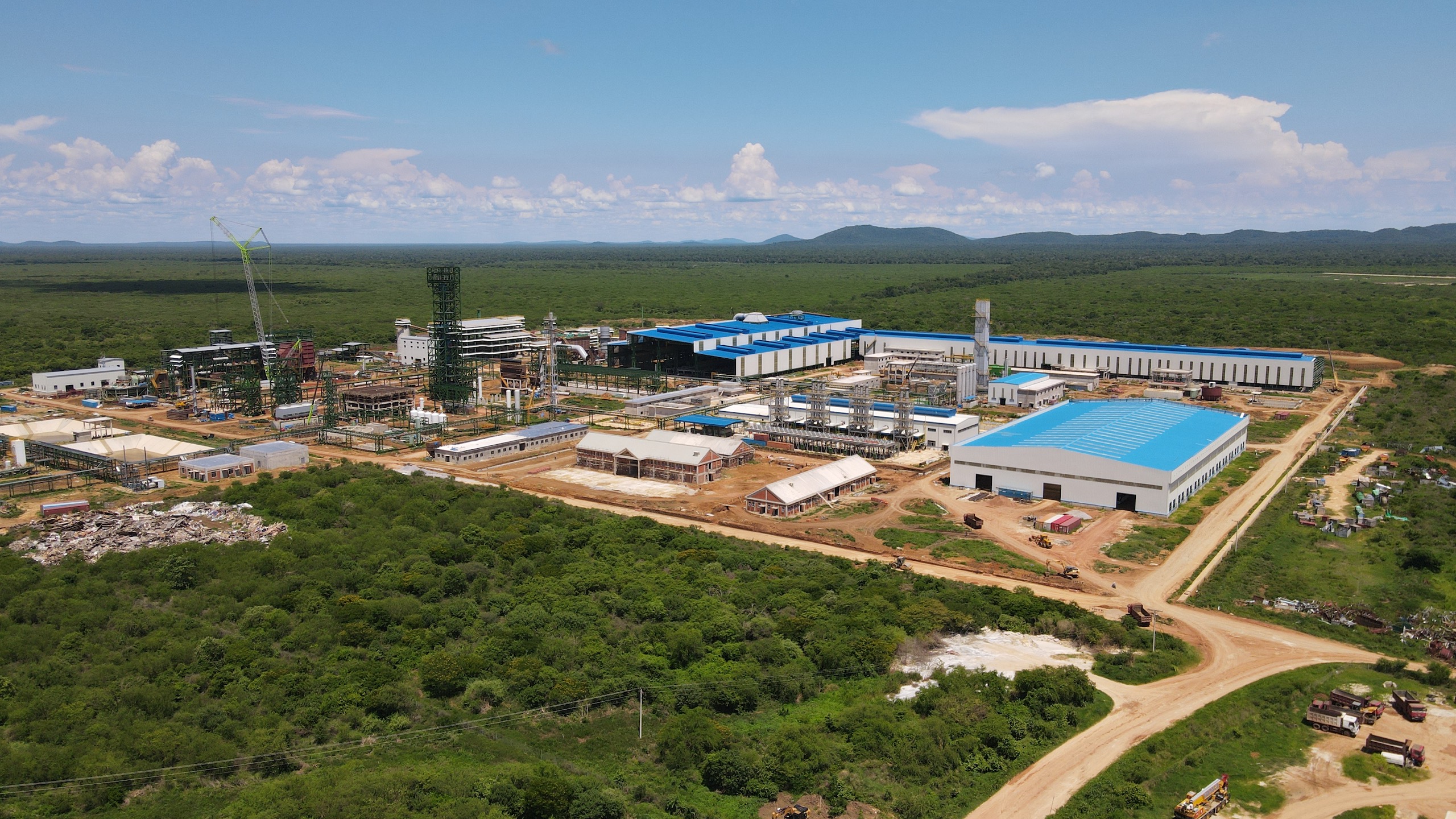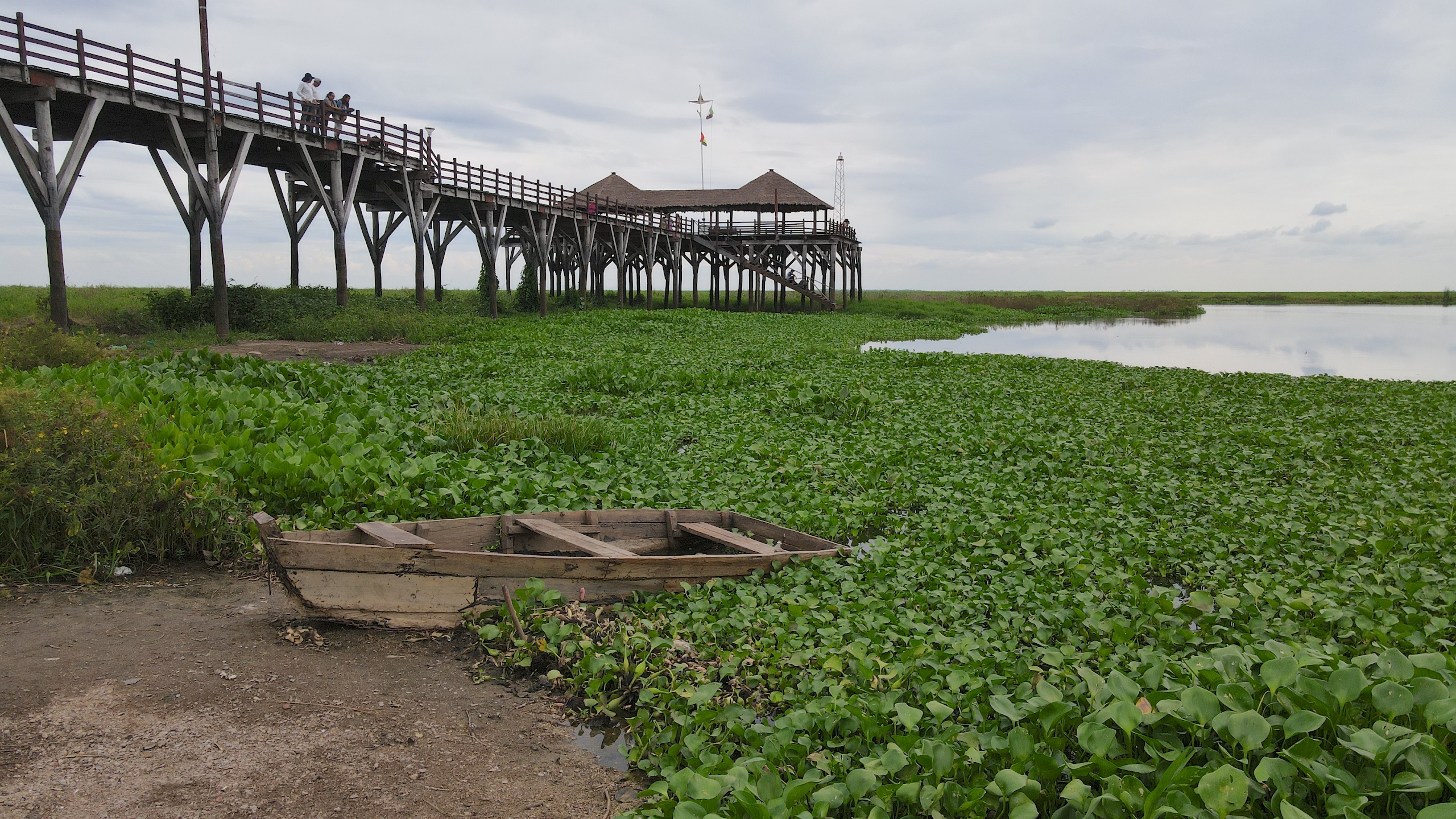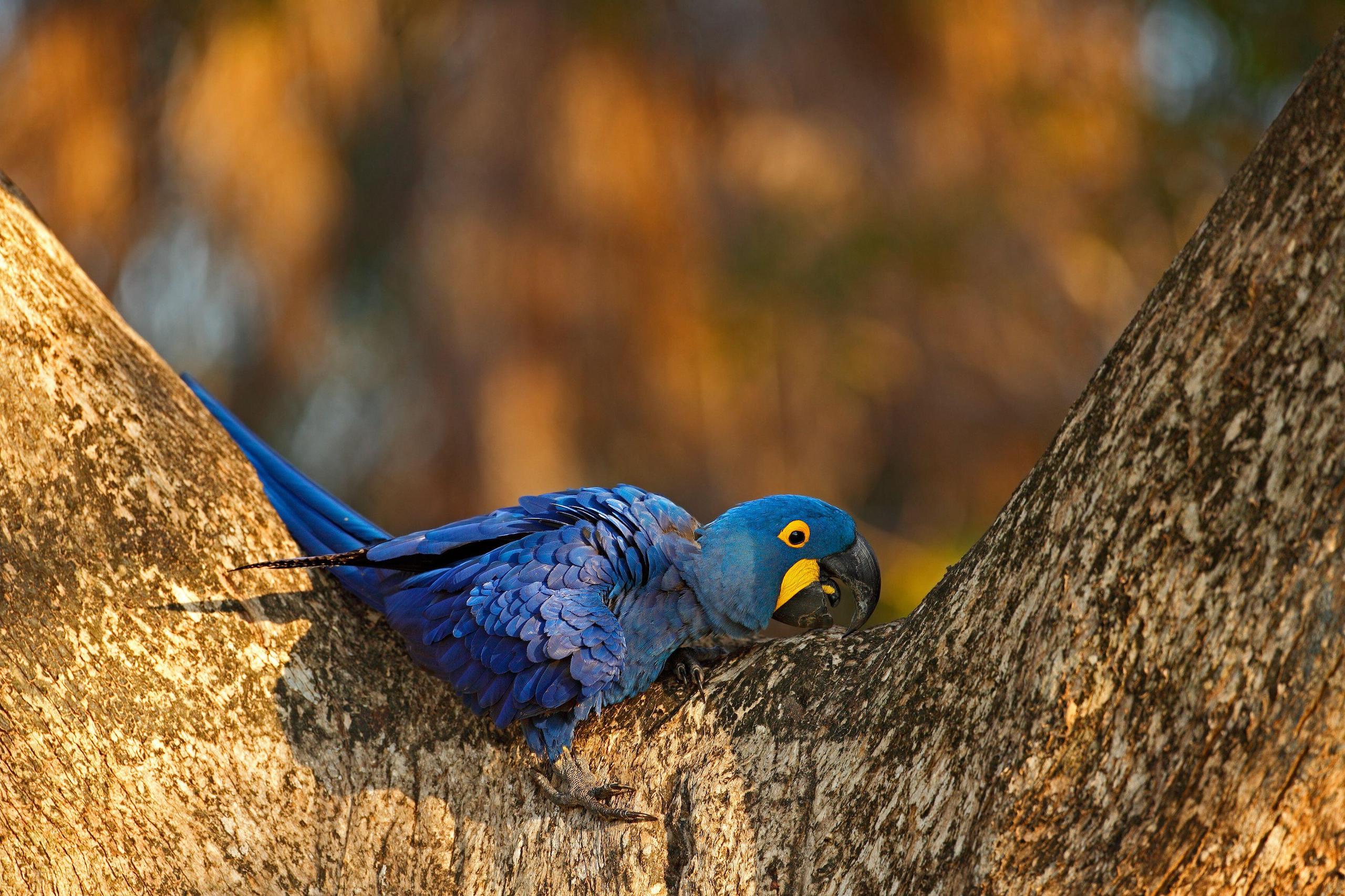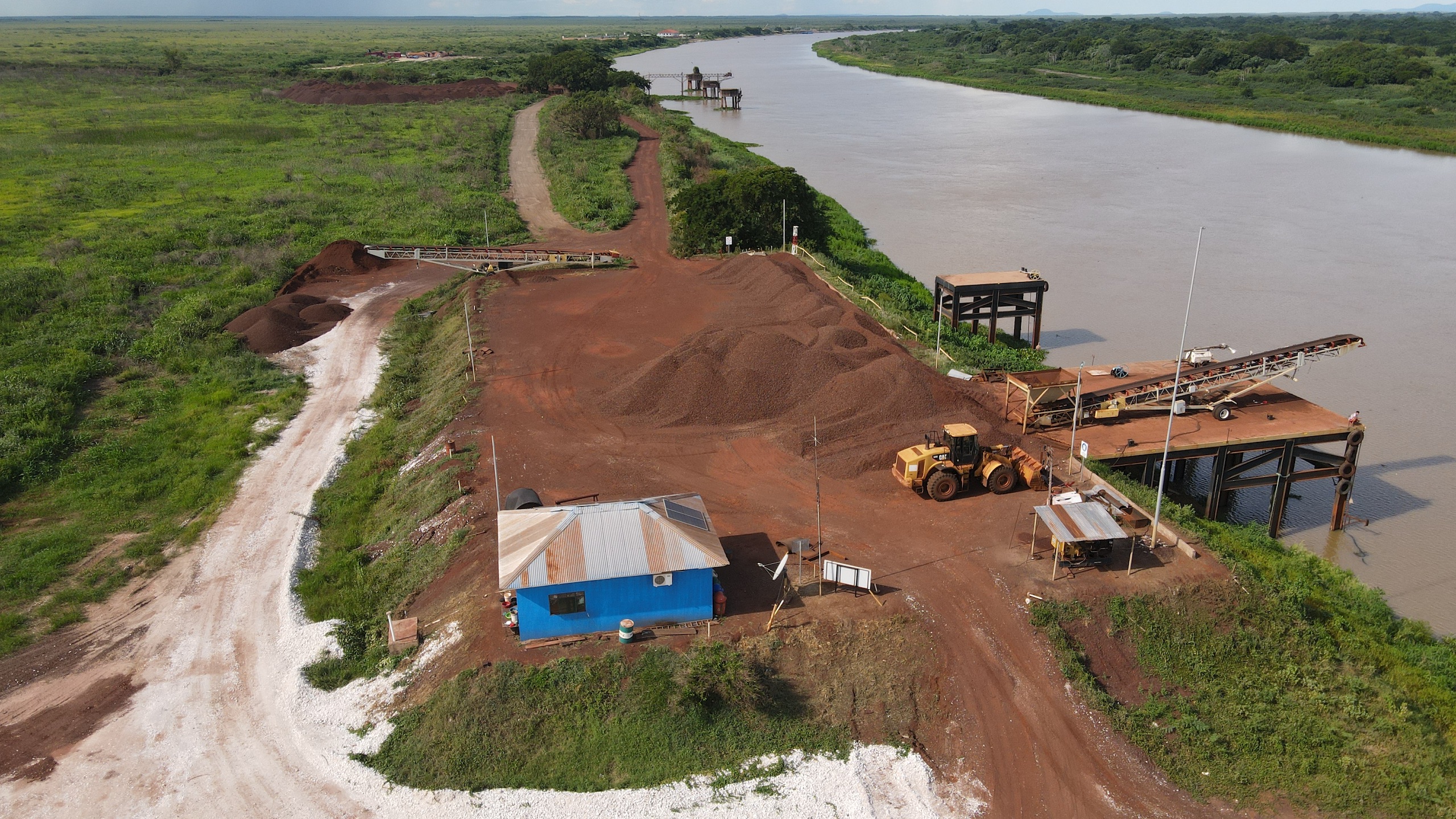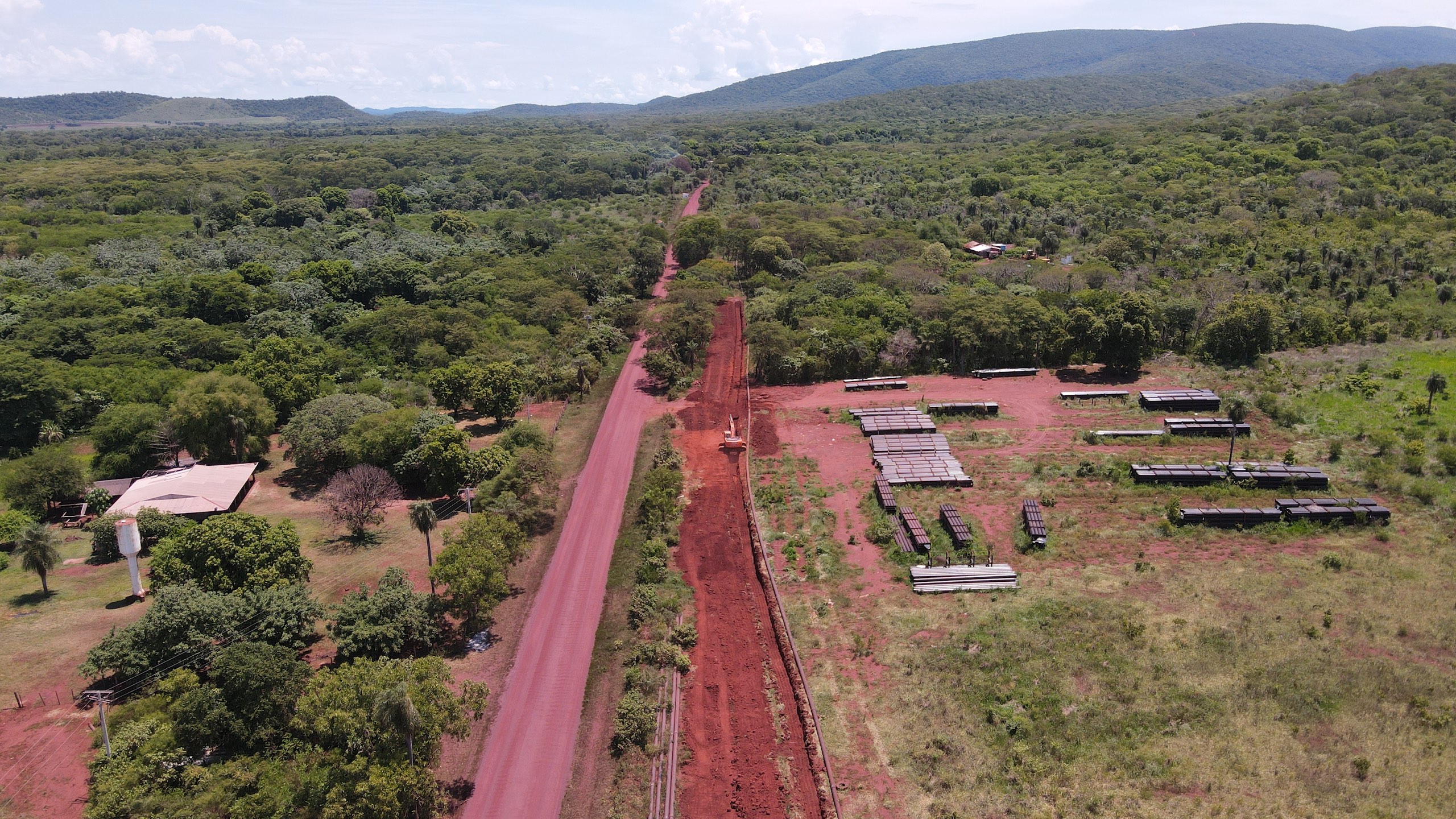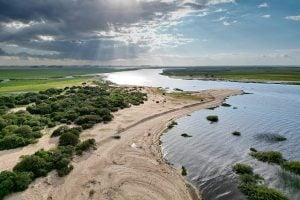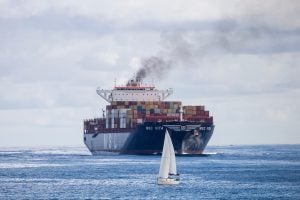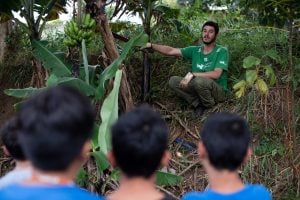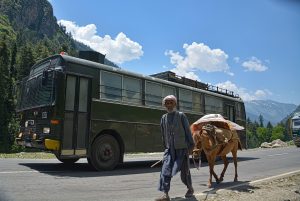In the middle of the Bolivian portion of the Pantanal wetlands lies one of the largest iron ore deposits in the world: the Mutún. A hilly range with a mineralised surface area of 75 square kilometres, its reserves include 40 billion tonnes of iron – or just over 20% of global availability – and 10 million tonnes of manganese. For several decades, this untapped resource has been seen as the hope for Bolivia’s development. But its current situation is leaving surrounding communities, as well as biologists and conservationists, worried.
The idea of building a steel plant in the area was conceived sixty years ago, Jorge Alvarado Rivas, the current president of the state-owned Empresa Siderúrgica del Mutún (ESM), told Dialogue Earth. But only in 2006 did a bidding process come to fruition.
After a year of negotiations, the Indian firm Jindal Steel and Power Ltd was awarded the 40-year contract to exploit and convert the iron into steel, in a risk-sharing deal with the Bolivian government. The company promised to invest USD 2.1 billion in the project, but subsequently withdrew from the country in 2012, citing repeated fines imposed by the government of then-president Evo Morales for alleged breach of contract.
Though that was Jindal’s official reason for its exit, María Renée Barrancos, a biologist who worked in the environmental department of the Puerto Quijarro municipality at the time, says there were other factors leading to the company breaking the contract. In meetings with the department, the company indicated their intention to use water from the Cáceres Lake in Pantanal to wash the ore, she claims. “They said that there was enough flow to use 5 million cubic litres of water per hour and that, in compensation, they were going to build treatment plants for this water for the two municipalities,” says Barrancos, referring to Puerto Suárez and Puerto Quijarro. She helped lead the local population’s resistance to the company’s manoeuvres.
At the time, the lagoon was a natural body of water eight kilometres long and six kilometres wide, with a depth of roughly five metres, a report noted. In 2021, the municipality of Puerto Suárez declared a disaster due to the drought in the lagoon, having registered a 76% decrease in its size over three decades.
When Jindal withdrew, it claimed the reason for not fulfilling its contract was the lack of water and natural gas supplies needed to start up the industry. Attempting to avert a similar outcome, the Bolivian government guaranteed the provision of both resources when a new contract was signed with ESM in 2016, this time with the Chinese state-owned Sinosteel Corporation.
ESM’s Rivas confirmed in March this year that, eight years after the agreement with Sinosteel, construction of the seven-plant complex was 87% complete. He said the works had been paralysed between 2019 and 2020 due to political conflicts in the country, and subsequently by the Covid-19 the pandemic, but anticipated that the sixth plant will be completed in August, with the final facility ready by February 2025.
Under the terms of its contract, Sinosteel must carry out the design for the industrial plant, build it, start it up and operate it for a year, after which the Bolivian company will take over, Rivas says, adding that a team of Bolivian professionals are being trained in China to run the facility.
To complete construction and begin operations, USD 546 million will be guaranteed from three sources, he says: about USD 400 million from the China Eximbank – the State Council policy bank that has operated mainly in mining and metals, infrastructure and energy – and USD 80 million from Bolivia’s sovereign wealth fund Finpro (Fund for the Productive Industrial Revolution), along with USD 70 million from the national treasury.
Water supply for the plant’s operations will come from an aqueduct that is being built to transport water from the Paraguay River to the Mutún plant. The system will pass through Otuquis National Park, a protected area in the Pantanal of high conservation importance due to its rich biodiversity.
The state-owned oil and gas firm Yacimientos Petrolíferos Fiscales Bolivianos has also guaranteed the supply of natural gas to get the industry going; as of last year, the gas pipeline for the Mutún operation was reportedly 70% complete.
Against this backdrop, Bolivia is preparing to start up its first state-run iron and steel plant to convert Mutún iron into rebar and wire rod for the construction industry.
Annually, Rivas says, the plant will produce 200,000 of the 400,000-450,000 tonnes of steel required by the domestic market. “With this steel complex, we are starting the industrialisation of the country, and the construction of a second steel complex [adjacent to the first], with a capacity of 500,000 tonnes, is planned,” he declared.
Rivas adds that both plants will have a combined 700,000-tonne capacity, which would cover the country’s current imports from Brazil, Peru, Argentina, Brazil and China. The surplus 200,000 tonnes will be exported, “so that, if this second plant is built, by the end of 2030-31, we will cover the domestic market and exports,” he says.
Industries in a biodiversity hotspot
The Bolivian Pantanal, located on the country’s south-eastern border with Brazil, is part of the Gran Pantanal, a fragile ecological landscape that extends across both countries and a small part of Paraguay. Spanning some 200,000 km2 – almost half the surface area of neighbouring Paraguay (407,000 km2) – it is considered the largest continuous wetland in the world.
Within Bolivia, the Pantanal spans 32,000 km2 and includes four municipalities of the Santa Cruz department, including Puerto Suárez, where Mutún is located. Due to its ecological importance and biodiversity, the Bolivian Pantanal was declared a Ramsar site, a wetland of international importance, in 2001.
The Gran Pantanal is a wetland system made up of lakes, lagoons, marshes, rivers, flooded savannahs, palm groves and at least three types of forest. Marlene Quintanilla, research director of the NGO Fundación Amigos de la Naturaleza (FAN), explains that the whole chain of wetlands drives the water cycle and rainfall far beyond its bounds – which is why the biome is sometimes dubbed the “water factory”. She explains: “In climatic terms, it regulates global temperatures and flood pulses. It prevents extreme drought events and, globally, mitigates warming.”
Because of its location and connection to the cross-border Paraguay River, on which Bolivia has shipping ports, the Gran Pantanal is also one of the outlets for Bolivian export products such as soybeans. However, in the four decades up to 2020, the Bolivian Pantanal recorded its greatest ever average reduction in water levels, according to Quintanilla: “We identified that in the Pantanal biome, rainfall was reduced by an average of 23%.”
Among other factors, deforestation and forest fires have been the main causes, and these have been increasingly recurrent and intense in recent years, she notes. The water generated in the Pantanal also sustains local industries and agriculture, bordering areas where soy is produced and exported, and cement production exists. Quintanilla warns that such losses in water will likely be harmful for business.
No harm to third parties?
Since 2014, biologist Juan Carlos Urgel has been entering the Otuquis National Park to conduct documentation and studies. This protected area is located a few kilometres from Mutún and, although Alvarado says there will be no environmental impact in the protected area on the diversion of the flow of the Paraguay River, Urgel says he has observed the opposite.
In Otuquis, Urgel claims that a dirt road has been carved out, and in the Mutún area, bodies of water have been diverted, “which were wetlands and have now dried up”, he says.
The ones who are going to suffer are us, our flora and our faunaAna María Tomichá, an Indigenous resident, close to the Otuquis National Park
In July last year, following similar complaints, a commission made up of members of parliament and representatives of the Santa Cruz government and the municipality of Puerto Suárez carried out an inspection of the industrial complex’s facilities.
The 24-page document prepared by the commission after its inspection, to which Dialogue Earth had access, states that Sinosteel subcontracted other Chinese companies and confirmed that iron ore was already being exploited through the open-pit method. One of these subcontracted firms “would be in charge of operating the washing plant [for the ore] and would use water from the San Juan river”, the report noted, and that water for the factory’s construction and other activities is being pumped from a local stream.
It also noted that trenches of significant size were dug in Otuquis National Park to bring in materials to build the aqueduct and to transport machinery for clearing and levelling activities. The trench operation “generates a great impact on the ecosystem of the protected area”, the report stated. The inspection also found the presence of different types of waste such as metal, filters, paint cans and plastic bottles in the biodiversity-rich area.
The Santa Cruz deputy, María René Álvarez, asked the Ministry of Environment and Water for an explanation on these findings. She said the answers she received highlighted that the National Competent Environmental Authority (AANC) “did not issue any environmental licence for the mineral exploitation activity”. It also confirmed that only water taken from the Paraguay River was authorised for industrial processes. Both responses contradict activities observed by the commission in the plant.
The commission recommended that vehicles comply with the national park’s speed limit of 40 to 50 km/h when constructing the aqueduct, to help prevent collisions with wildlife. But park rangers in the area told Dialogue Earth of difficulties enforcing this. They told of how trucks enter at the end of the day, when animals emerge to search for food and water, meaning the likelihood of impacts remains high.
Until a few years ago, people in the Pantanal area expressed support for this project, galvanised by the possibility of having a stable job in the new industry. This, however, is “a dream that has been dying, because they realise that they are not even the ones working,” says Barrancos. Ana María Tomichá, an Indigenous woman who lives in the Motacusito Nuevo community, located in the vicinity of Otuquis, notes that very few local people have been hired, “because they call for people with experience, and many here do not have a CV.”
The roar of the trucks can always be heard, Tomichá notes. “It affects us because we are close to Otuquis. Imagine having these projects, which often do not comply with the law; however, the laws protect them, and the ones who are going to suffer are us, our flora and our fauna,” she says. “The impact is going to be for everyone.”
Dialogue Earth approached Sinosteel representatives for comment on the commission’s report, but at the time of publication, no response had been received.
